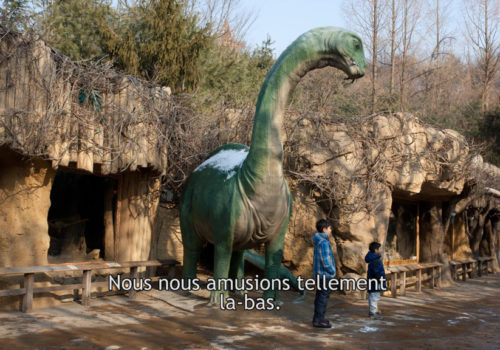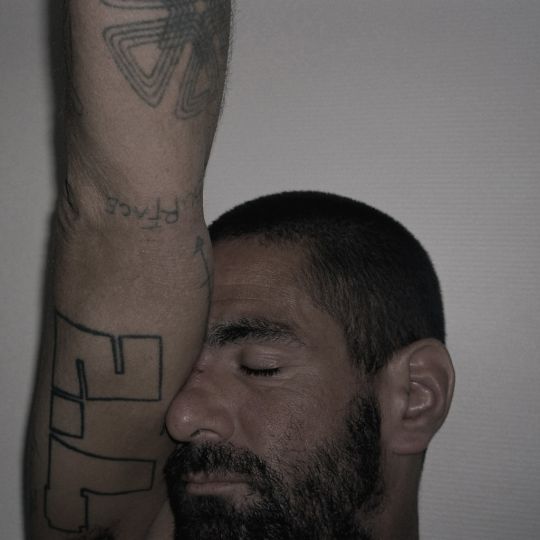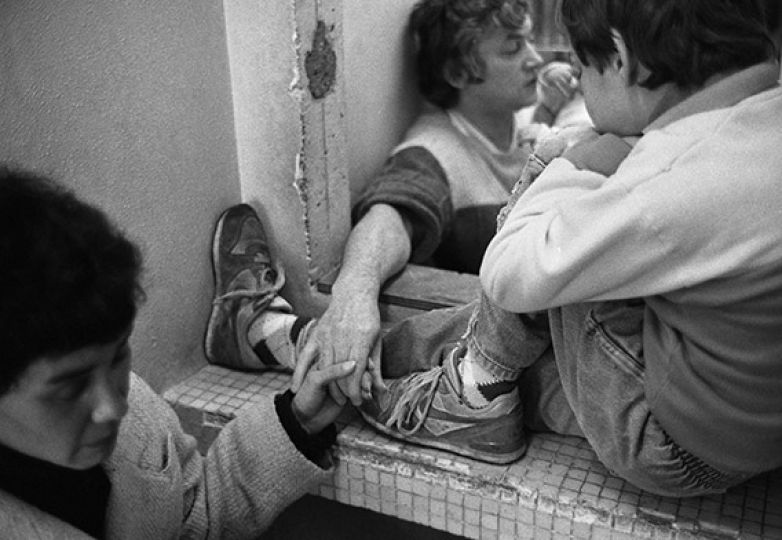A Special Mention in the Prix Nuits Photographiques 2015 was awarded toRomain Champalaune for his work on the capitalist extremes in Korea, entitled “Samsung Galaxy”, Samsung is known globally in the field of electronics and has almost eighty subsidiaries. Samsung is present at all stages of Korean life, from the cradle to the grave. Today we will find out about this winning film and interview the winner.
L’Oeil de la Photographie : Can you tell us about the genesis of this project ?
Romain Champalaune : In our society, big business has sometimes become more powerful than the state. Corporatism has seeped in all aspects of daily life. In many countries it is diffuse but in South Korea, a small country of fifty million people, it manifests itself in a very visible way. In wanting to deconstruct the close relations that exist between the industrial conglomerates (chaebols) and the Korean state, I decided to concentrate on the most important of them: Samsung.
I first went to South Korea in December 2013 to look for locations and conduct interviews. I also was able to visit the Samsung Medical Center, the Samsung amusement park, to meet, some employees of the company , the organisation that stands up for workers in the field of semi-conductors.I returned for a second time in 2014, this time supported by the newspaper Le Monde. Two things drove me: the description of the paradox that represents this extreme form of capitalism and which brings prosperity to the whole nation, but which creates a dangerous dependence on a single entity; and the battle of those who fight the giant, sometimes sacrificing their lives, to defend the workers whose rights have been flouted and those whose work-based health problems are well known.
ODLP : Did you have any difficulties in carrying out this project ?
R. C. : This problem is not new. it’s never a matter of revealing another hidden scandal. It’s more a matter of using the image to exploit the things we already know, and of which the collection, the juxtaposition, the cross-checking, allow us to see differently. For that I adopted the position of any Korean who walks about in his own country. When I came back I didn’t have any pressure, nor censorship. I only had contact with Samsung once – to visit a sports centre – but the photos weren’t good enough and I didn’t use them.I set up the process, the audiences or the business of negotiating with the victims of leukaemia, just like any other Korean journalist. I had not problems discussing the project with the public relations department.
ODLP : Can you explain the choice of exposing the extreme strength of capitalism as opposed to the imaginary evidence of a young Korean woman ?
R. C. : The film that I made is structured around the voice of an imaginary Samsung employee enumerating the different fields in which the group is present. From this inventory à la Perec unrolls a kind of comedy of repetition to the point of absurdity and nausea. But that conveys a certain reality in Korea. Samsung is revered as much as it is detested. Each year 200,000 people enter for the SSAT, the entrance examination to join the group.Working for Samsung is a guarantee of a better salary, prestige, but everyone knows of the abuses of the company. Particularly the level of the range of working hours. But you also have to remember that Korea is a small country yearning for recognition, squeezed between two great powers (China and Japan), and the fact that Samsung is a company well-known globally is a source of great pride. It’s all of this ambivalence that I wanted to show in the film.
ODLP : Do you think that the photofilm gives a particular strength and resonance to your subject ?
R. C. : I mainly met women during my investigation.Strong and courageous women – in this male chauvinist, patriarchal Korean society. The students, the employees, the former employees, the victims, the victims’ relatives, etc. The female narrator of the film can be looked upon as a “synthesis” of all the women that I met. This recourse to biographical material with a fictional and sociological distance allows me to achieve a more general representativeness. The fiction is used to retranslate a reality, for a greater identification and finally a better reflection. I could not achieve this without using film.
The photofilm allows for the equal integration of two essential components: the language and the rhythm. The female narrator’s voice is calm, level-headed, the Korean language possesses a naturally soft rhythm. The film acts like a cradle that lulls the spectator to sleep in order to deal him a blow more effectively. At the heart of it, the film proceeds with a brutal break: the tragic, death makes its appearance.
The laughter stops. It’s a matter of creating a macabre visual poem, cold in its aesthetic but powerful in its impact.
FESTIVAL
5th edition of Nuits Photographiques
From September 17th to December 12, 2015
Screening evenings : 17, 18 and 19 September 2015
Pavillon Carré de Baudouin
121 Rue de Ménilmontant
75020 Paris
France
http://lesnuitsphotographiques.com



















